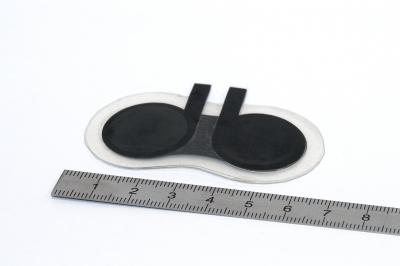Like your t-shirt, the batteries are printed using a silk-screen method.
They are also different from conventional batteries in that these printable versions weigh less than one gram, are less than a millimeter thick and can even be integrated into bank cards.
The battery contains no mercury and is in this respect environmentally friendly. Its voltage is 1.5 V, which lies within the normal range. By placing several batteries in a row, voltages of 3 V, 4.5 V and 6 V can also be achieved. The new type of battery is composed of different layers: a zinc anode and a manganese cathode, among others. Zinc and manganese react with one another and produce electricity. However, the anode and the cathode layer dissipate gradually during this chemical process.

New Fraunhofer battery comes out of the printer and can be applied to flexible substrates. Credit: Fraunhofer ENAS
Therefore, the battery is suitable for applications which have a limited life span or a limited power requirement, for instance greeting cards.
"Our goal is to be able to mass produce the batteries at a price of single digit cent range each," states Dr. Andreas Willert, group manager at ENAS.
To make them, a kind of rubber lip presses the printing paste through a screen onto the substrate. A template covers the areas that are not to be printed on. Through this process it is possible to apply comparatively large quantities of printing paste, and the individual layers are slightly thicker than a hair. The researchers have already produced the batteries on a laboratory scale. At the end of this year, the first products could possibly be finished.






Comments